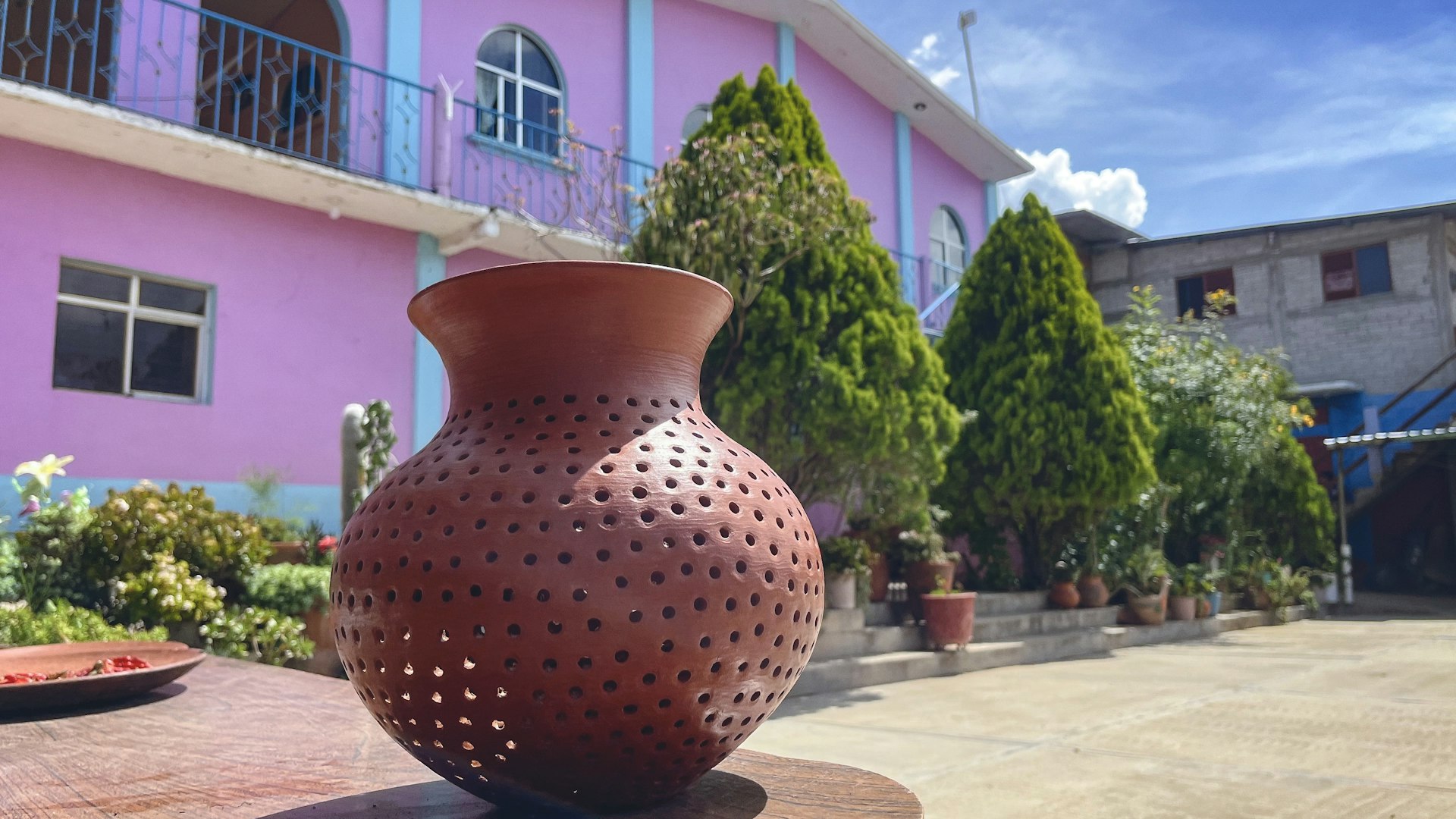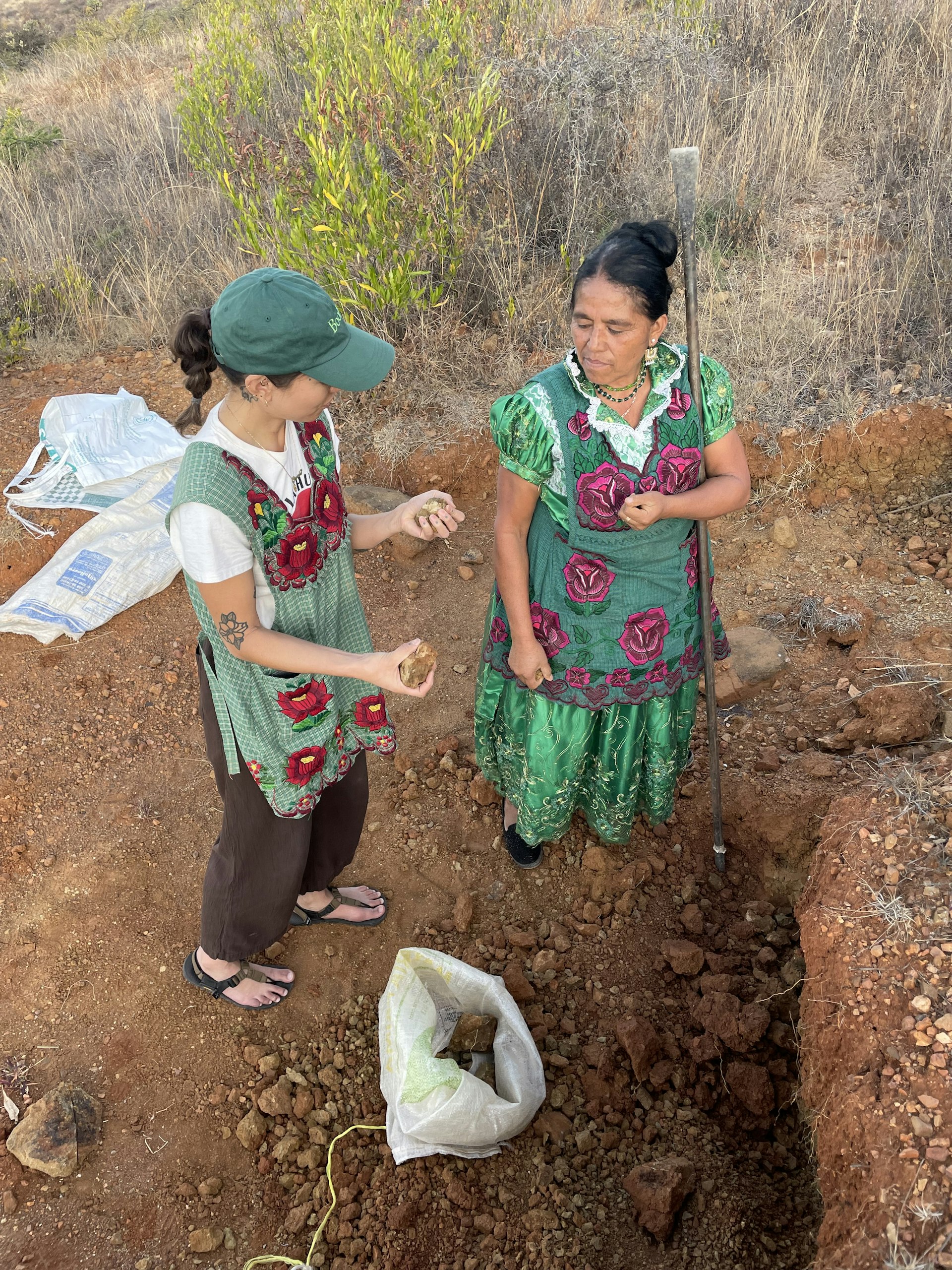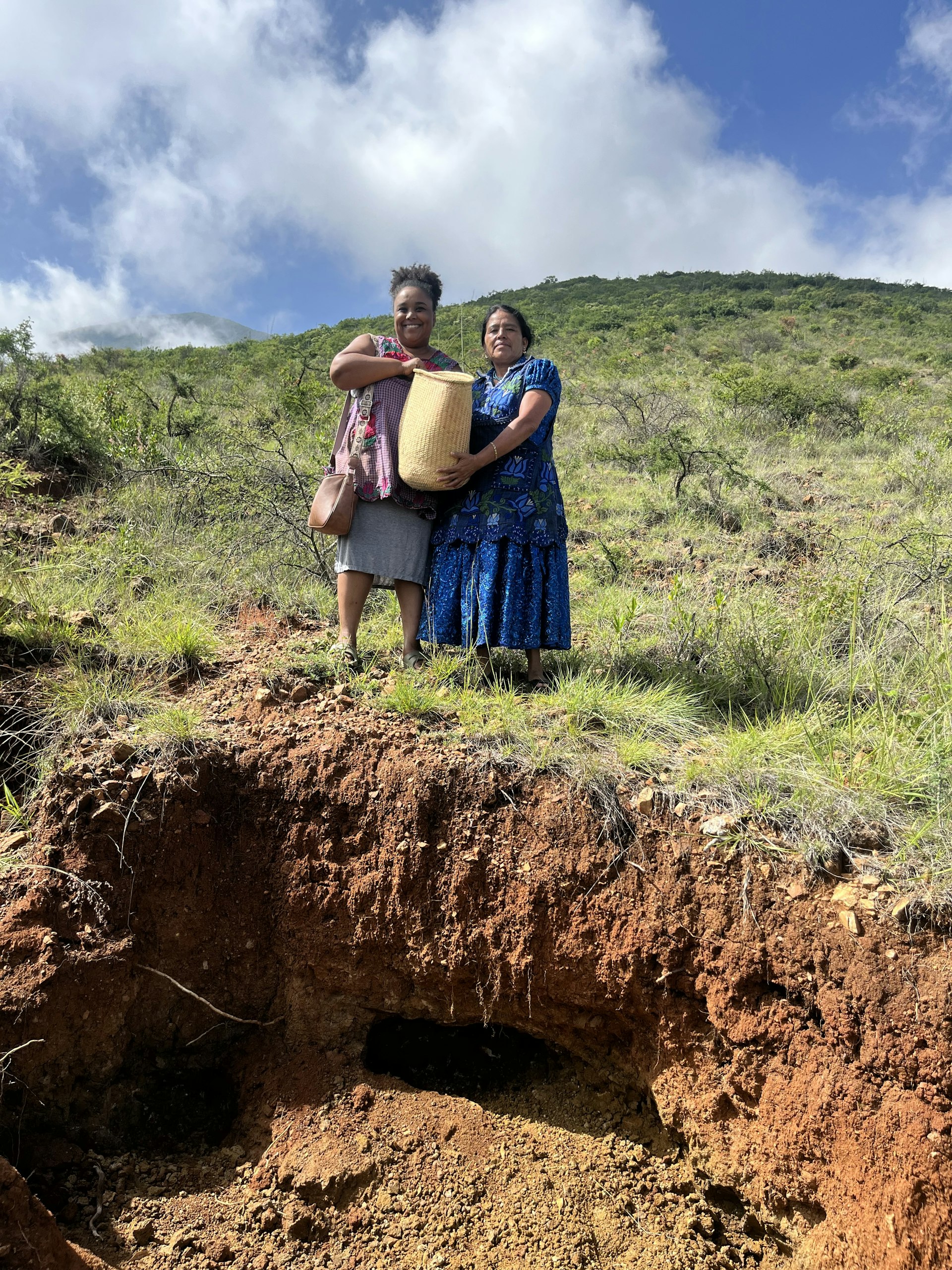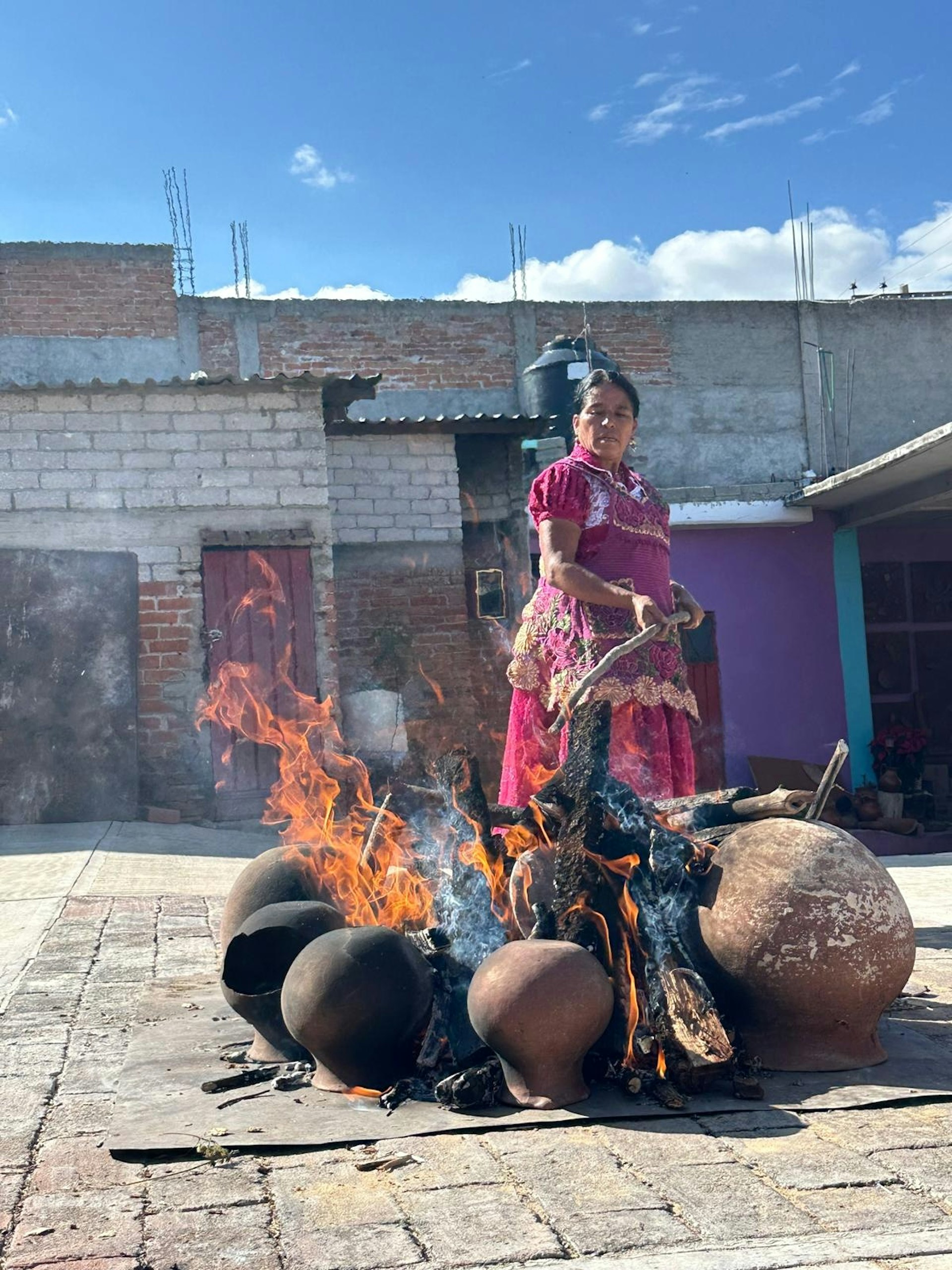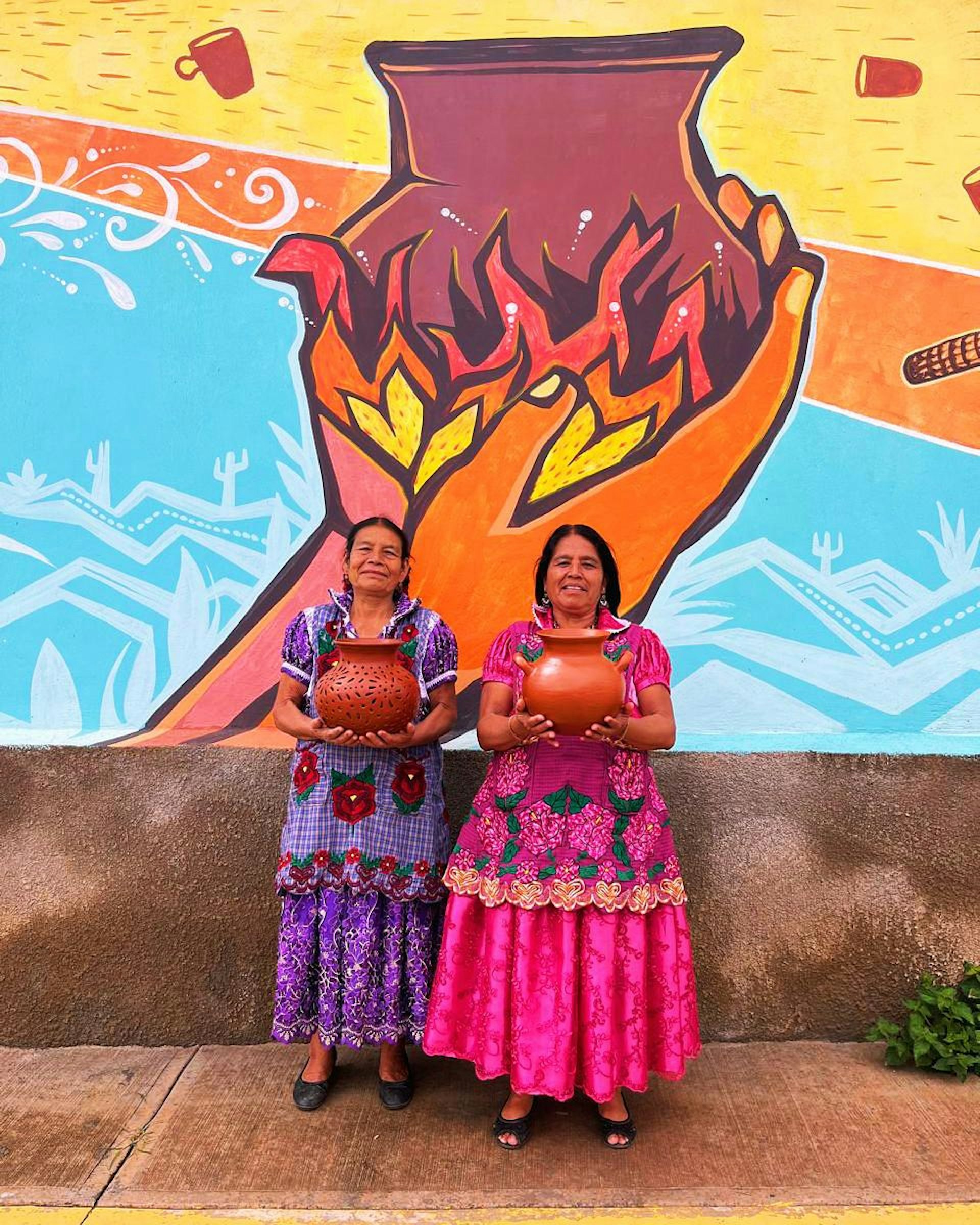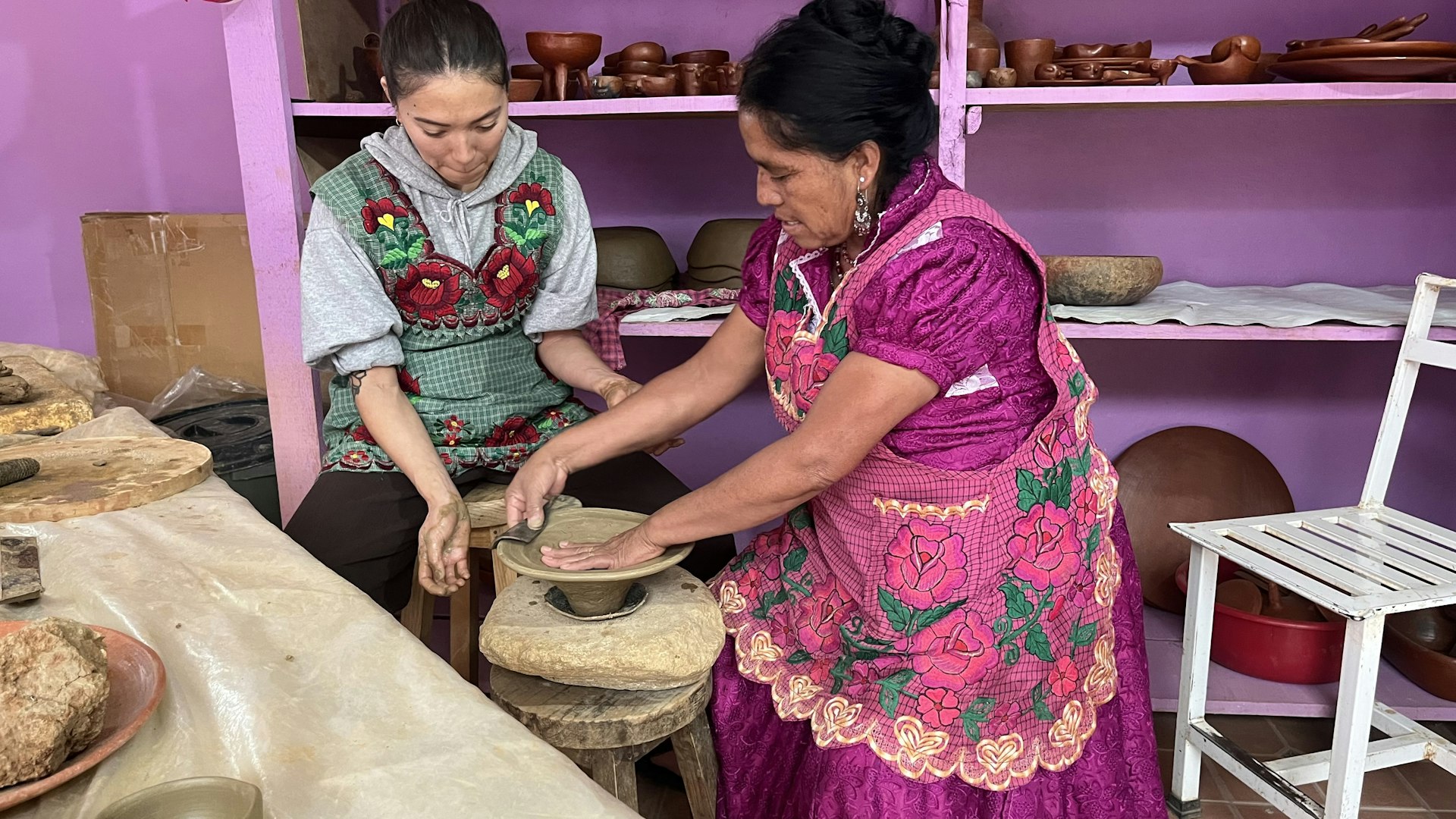November 22, 2024
Macrina, The Zapotec Artisan: Daughter of the Red Clay
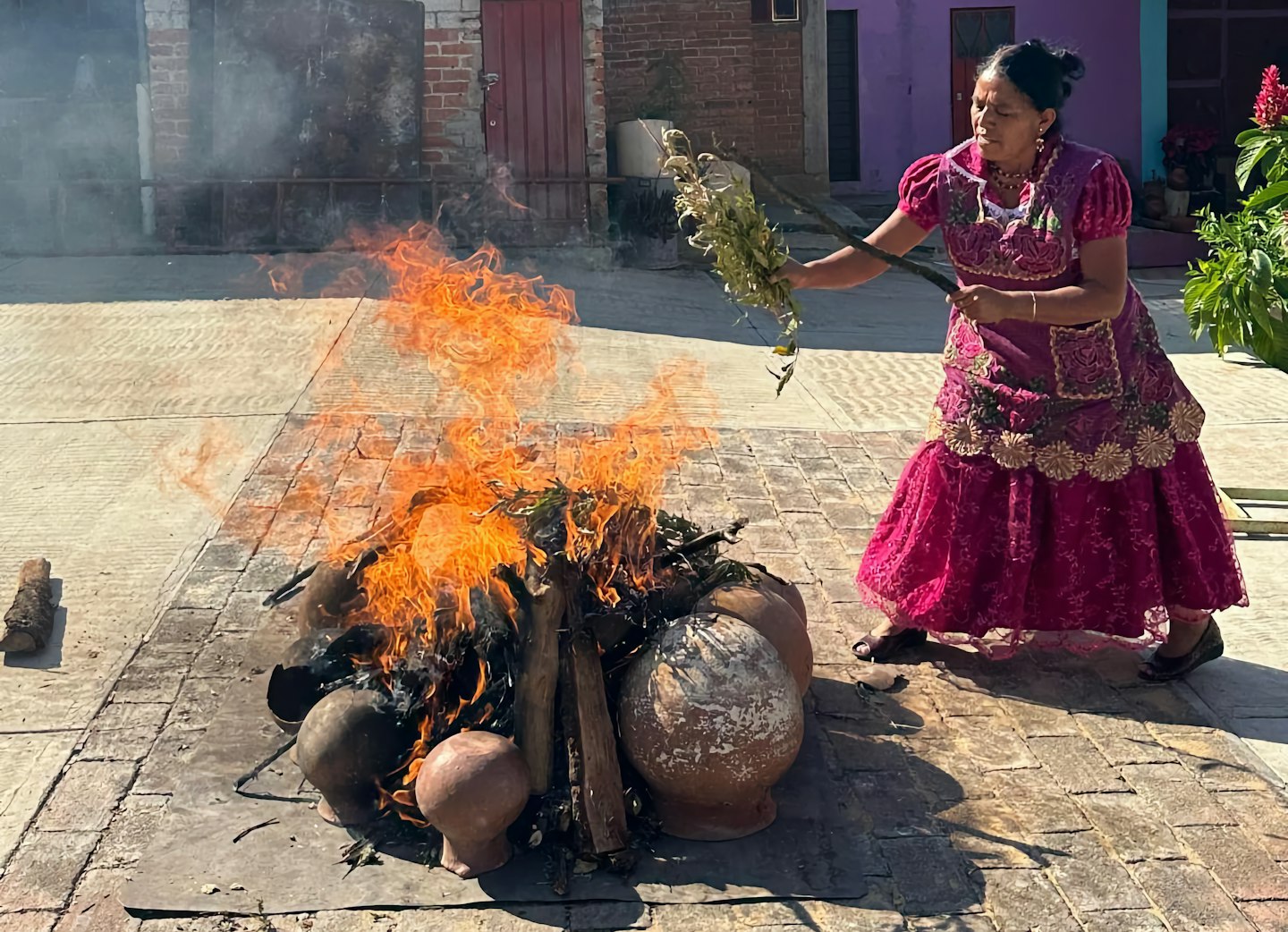
In the early months of the year, under the Oaxacan sun, master ceramicist and VAWAA artist Macrina summits the hillsides in her village along with the women of San Marcos Tlapazola to gather red clay to sculpt into forms that carry generations of tradition. For Macrina, a comal—a flat, round piece of pottery traditionally used to cook tortillas, memelas, or quesadillas—is more than a tool to cook tortillas. It serves as a bridge between past, present, and future and is the foundation of reimaging her heritage.
In her village of San Marcos Tlapazola, Oaxaca, creating a comal is a skill that has been passed down in her family of Zapotec women. Yet, for Macrina, the comal represents an opportunity to push histories and traditions beyond the scope of the village. Her comals are canvases for innovation, and the craftsmanship pushes boundaries beyond its traditional form. Together with the women of San Marcos, she is reimaging ancestral Zapotec pottery by transforming it from its common utilitarian use into new functions and features. For example, a centerpiece for a table, a large serving plate, or even a work of art. Through these reinventions, Macrina honors her mother’s teachings daily, simultaneously expanding the possibilities of what red clay can become.
A beautifully handcrafted red clay pot, shaped by Macrina’s skilled hands and rich heritage.
The comal, a symbol of tradition and heritage, is more than a piece Macrina makes with ease—it is an extension of her identity. Dressed in traditional Zapotec garb, ceramicist Macrina introduces herself in her native tongue. The pride in her movements and smile are the result of 48 years of mastery and dedication to her craft. She has learned everything from her first teacher, her mother. With her mother’s wisdom and hands, she was guided from a young age in the art of pottery. Everything Macrina knows began with her.
This is why Macrina shares her mastery with others, offering a VAWAA apprenticeship as a way to pass down her cherished tradition of preserving Zapotec pottery. She believes that Zapotec pottery and the knowledge instilled upon her is a gift. Her vision is clear- to preserve the history of her people and the art of red clay pottery- all while inspiring others to see it in new ways for themselves. Speaking with Macrina is receiving a glimpse of timeless wisdom. She vividly describes the journey of clay—from the hillsides to its final form—bringing a generational craft to life through her words.
Macrina: Shaping Zapotec Heritage, Wood Fired by the Open Sky
The legacy of Zapotec pottery begins where the earth meets the artist. From January to March, Macrina and the women of San Marcos journey into the mountains to forage for yellow and red clay. It is in these months, before the rains arrive that provide the best time to collect the raw material. With costales, or heavy sacks used to transport clay down the mountain, they gather enough for the year.
VAWAA guests Terycka (L) and Ursula (R) harvesting clay during their apprenticeship with Macrina
At the base of the mountain, the clay is spread across sunlit patios as it dries under the Oaxacan sun, the moisture evaporating slowly until the clay is ready for shaping. Macrina begins shaping the clay using tools of tradition and ingenuity. There is not a potter’s wheel in sight. Instead, she reaches for the smooth surface of a leather scrap, the curve of a gourd shell, and the rough ridges of a dried corncob. With her primitive tools, she forms the clay to echo her heritage. Each hand-built piece emerges. It is a dialogue between the material and the maker. She smooths imperfections with a practiced hand, patches weak points, and balances weight with a clear understanding of the clay’s language. The pieces are left to dry further, preparing for the next stage. As each moment arrives, the piece is one step closer to becoming a timeless vessel and a ritual that carries the essence of tradition and the imprint of Macrina’s artistry. Each carefully shaped piece is prepared for its final transformation. Under the open sky, the firing process begins—a sacred ritual of fire and clay.
The firing takes place in the open air. It is an intricate, detailed process that Macrina has honed through trial and error. First, Macrina constructs a circle of broken pots, a circle of broken pots from past firings arranged like a protective shell. Layers of oak firewood, maguey leaves, and corn husks are added, and their earthy scents start to emerge as the fire builds. Inside, larger pots hold smaller ones, and each piece is carefully stacked and fitted to optimize the firing process. Tepalcates or sheets of metal are placed to help prevent staining, and ocote or pine, totomozle or corn husks, maguey stalks, and bull dung fuel the fire. Finally, maguey stalks, pine, and even bull dung fuel the flames, transforming the clay into functional and beautifully alive stories that show their process. Every curve, mark, and polished surface is revealed.
Macrina, A Zapotec woman, tends to a glowing fire, skillfully feeding the flames through the ancient tradition of wood-fired pottery.
It is an iterative process between experimentation and refinement, mastering the ancient dance between fire and clay. If the fire burns black, more wood is needed. If only ash remains, the pieces are complete. Only a master like Macrina can transform her clay into vessels of beauty and utility. The layered process in the open sky reflects her deep connection to the ancestors who have led her on this journey and the traditions of clay that live within her. Each firing holds the spirit of those who came before her, their knowledge etched into every crackle of the flame. For Macrina, each firing is not just about her own creations. It is about preserving and sharing a legacy. Under the open sky, Macrina’s craft becomes a bridge between generations, where the past shapes the present, and the present molds the future—one vessel at a time. This ancient process is not just a personal journey for Macrina—it is woven into the very fabric of her community.
Women of the Red Clay
In San Marcos Tlapazola, pottery is a lifeline for the community. Every household and every family in this village has a unique clay practice, developing designs and methods that reflect their personal experience with the craft.
A member of the all-female Zapotec collective with Macrina posing side by side demonstrating community strength and shared pride of their intricate craft.
The powerful bond of the women of San Marcos is shared through their dedication to pottery and passing it down to future generations. Before the evolution of this grand community practice, women were confined to domestic duties, with little opportunity beyond the home due to societal inequalities. Still, it is the strength of this women-powered pottery tradition that runs deeper than cultural preservation. Today, these women uplift, teach, learn, and instill the pride of their identity in everyone around them.
Macrina leads a community of over 300 women in San Marcos Tlapazola to reclaim and redefine their heritage. At a time when her town's livelihood was dwindling, she saw potential in the region's most abundant and often overlooked natural resource: red clay. Through her vision and determination, Macrina has carved out a thriving market for this material. Today it is a symbol of resilience and creativity. She has empowered women to refine the pottery skills passed down through generations and guided women to open their own practices. Once a fading and dying art, under her leadership, red clay has become a destination and propelled these Zapotec women onto a global stage.
Craft Your Place in the Story of Zapotec Pottery
The tradition of red clay is not confined to San Marcos—it is a living practice that welcomes others to engage, learn, and carry its story forward. A VAWAA apprenticeship with Macrina is an immersive journey into the rich traditions of Zapotec red clay ceramics, offering the apprentice the rare opportunity to learn directly from the artisans who have preserved this craft for generations. As a VAWAA apprentice, you not only observe but actively engage in every step of the process. You hike to nearby El Picacho mountain to source and excavate local red clay and gain a firsthand appreciation for the labor and resilience needed to harvest this essential material. Back at the studio, apprentices are members of the local community, learning each integral step of the process.
VAWAA guest Terycka receiving guidance on how to shape clay.
Under Macrina’s guidance, apprentices explore techniques unique to her community, shaping the clay using tools like smooth leather, gourd shells, and dried corn cobs. Each apprentice glazes their pieces with red clay and completes the delicate firing process, a method steeped in tradition. Beyond the master craft experience itself, they break bread through traditional meals and connect with the local women of San Marcos Tlapazola, deepening their understanding of their individual stories and the historical significance of the Zapotec community.
Decades ago, San Marcos Tlapazola was a quiet village, its pottery known only to neighboring towns. Like the other VAWAA ceramic artists worldwide - Macrina has a vision. Thanks to her leadership, the artistry of Zapotec women has reached a global stage. By opening her community to the world, she has ensured that these long-held traditions are preserved, celebrated, and shared.
Macrina is more than an artist—she is a legend of culture and a catalyst for empowerment. The dedication she embodies, the resilience and innovation of her craft make her a transformative Zapotec woman, proud of her roots. Her legacy is a living and evolving practice that will ensure generations to come know their heritage.
To immerse yourself in Macrina’s legacy and book a transformative 6-day VAWAA apprenticeship, click here.
Written by Nakeia Medcalf, VAWAA Team
Explore all mini-apprenticeships, and be sure to come say hey on Instagram. For more stories, tips, and new artist updates, subscribe here.
